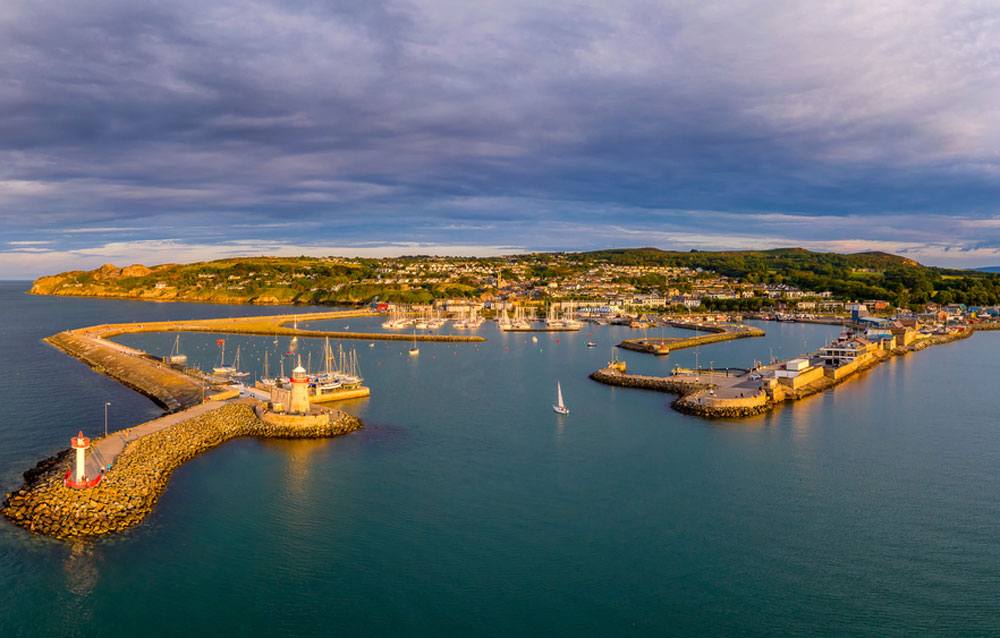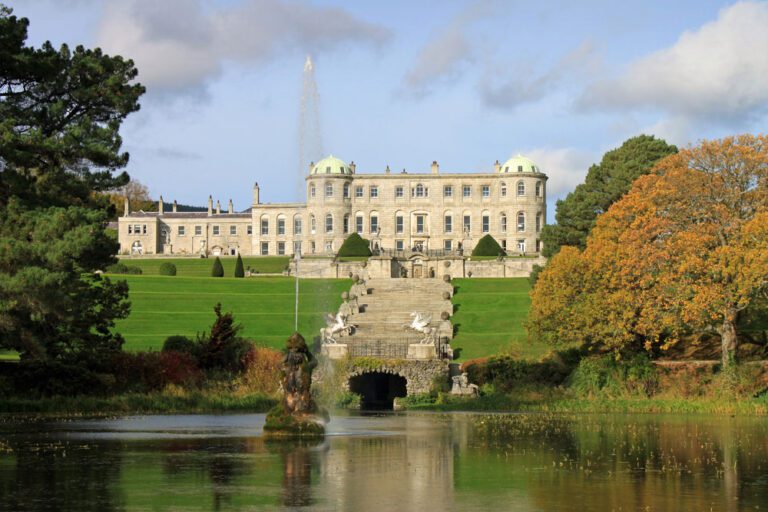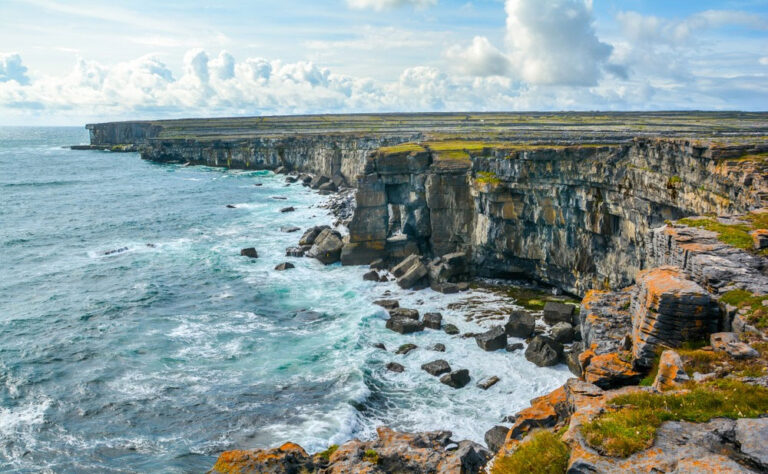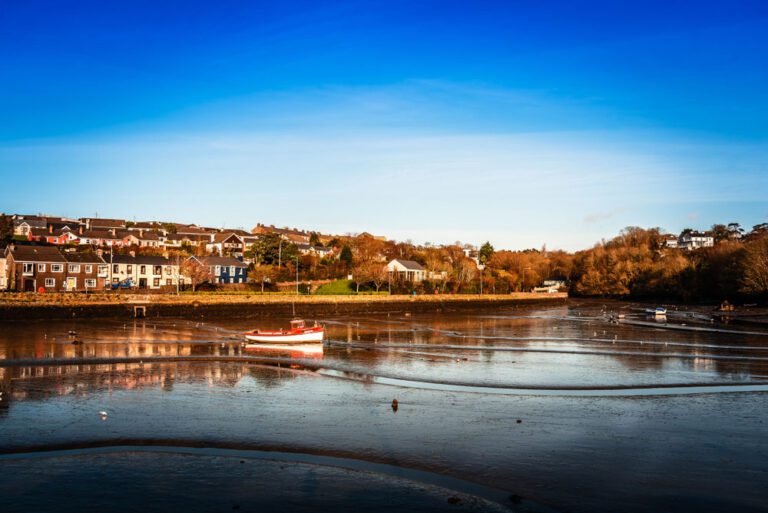A region of timeless beauty and enchantment may be found in the center of Ireland’s East Coast, right where the green land meets the blue sea. The Hill of Howth is a place that encapsulates the very essence of Ireland’s coastal beauty. It is a charming fishing community that is set on the craggy peninsula that shares its name. It’s a place where the past and present harmonize, and the sea whispers secrets of generations.
As I set out on the path that would eventually lead me to the Hill of Howth, I couldn’t help but reflect on the innumerable tales that are associated with this location. The gently undulating hills, towering cliffs, and lively harbor all appeared to call with tales of the bravery and aspirations of fishermen and mariners. It was a location where the past lingered in every cobblestone, and where the natural beauty of the area was woven into an alluring tapestry.
A Community Rich in Personality and Individuality
My adventure started in the center of the village where it all began. The primary street in Howth was called Harbour Road, and it exuded a very appealing combination of old-world beauty and modern attraction. Stylish seafood eateries and quaint taverns coexisted peacefully with quaint cottages that had brightly painted exteriors. It was a demonstration of Howth’s capacity to progress while preserving the essential qualities that make it unique.
As I meandered through the village, I was drawn to the lively atmosphere of Howth Market. At this location, local craftspeople and merchants presented their wares, which ranged from hand-made jewelry to freshly caught fish. The aroma of prawns being grilled combined with the tunes being played by street musicians to provide a sensory symphony that was very characteristic of Howth.
Then there was Howth Castle, a stunning example of medieval architecture that stretches back more than 800 years. It was a setting in which the stories of the past were whispered. The ivy that covered the castle’s walls gave the impression that they were whispering stories about the noble family who had lived there in the past and the generations of caretakers who had kept its memory alive.
A Walk Along the Boardwalk and Pier
But it was the bay that ended up winning my heart over completely. The fishing tradition of Howth was plain to see in each and every boat bobbing in the water, in the nets being repaired on the quayside, and in the weathered faces of the fishermen who still made their living from the sea.
I made the decision to go for a relaxed walk down the East Pier, where the briny breeze ruffled my hair and the calls of seagulls filled the air. The vistas were absolutely stunning in every possible way. The unforgiving cliffs of Howth Head rose on one side of the settlement like sentinels, protecting it from the churning waters of the Irish Sea. On the other hand, the village itself sprawled out along the coast, forming a brilliant mosaic of residences and commercial establishments.
As I walked further, I came across the iconic Howth Lighthouse. Perched at the edge of the peninsula, it was a stoic sentinel that had guided countless sailors safely home. I couldn’t help but marvel at the juxtaposition of the lighthouse’s stark functionality and the ethereal beauty of its surroundings.
The Howth Cliff Walk is a Remarkable Display of Mother Nature.
The Hill of Howth is perhaps best known for its cliff walks, a series of hiking trails that offer some of the most stunning coastal vistas in Ireland. I decided to tackle the Howth Cliff Walk, a moderate route that promised both natural beauty and a sense of adventure.
The trail led me along craggy cliffs that plunged dramatically into the sea below. Seabirds soared overhead, and the waves crashed against the rocks in a mesmerizing dance. The path itself was lined with wildflowers in a riot of colors, creating a vibrant contrast to the rugged landscape.
The view that could be seen from the top of Howth Head was definitely one of the highlights of the hike. I had a strong sense of connection to the land and the water as I stood there and looked out at the seemingly limitless length of the Irish water. This feeling lasted for the entire time that I was there. It was a location where time didn’t appear to move and where the problems of the world seemed to melt away in the face of such natural magnificence. It was a place like no other.
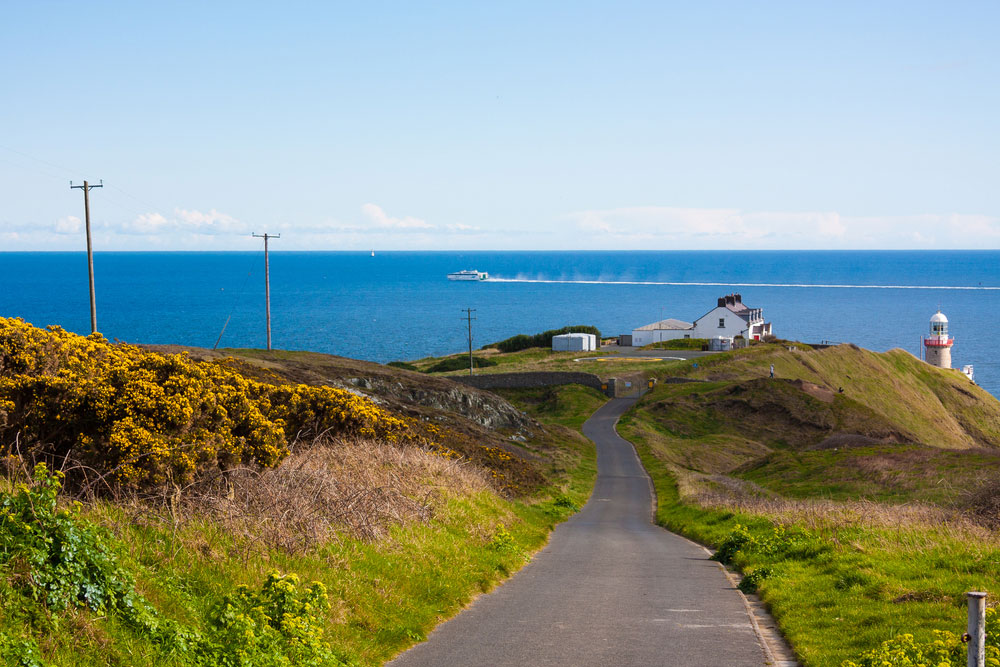
A Bounty from the Sea
When I got back to the town after my thrilling journey, I had a raging craving for some good food. It is not without reason that Howth is known as a refuge for seafood, and I could not wait to indulge in the bounty of the sea there.
I chose to eat at one of the harbor’s endearing seafood restaurants, where the fresh catch of the day was proudly displayed on ice, and I got comfortable. The menu was a seafood lover’s paradise, with options ranging from tender crab claws to luscious lobster. My meal of choice was the tried-and-true fish and chips, a dish that exemplified both the ease of preparation and the vibrancy of flavor that Howth is known for.
I couldn’t help but think about the journey that the ingredients themselves had taken, from the hands of the fisherman to the plate that was placed in front of me as I savored each crunch of the dish. It served as a poignant reminder of the mutually beneficial connection that existed between the coastal community and the sea, a connection that had kept Howth afloat for centuries.
The stunning Baily Lighthouse may be seen in the distance.
There is no way to get the whole experience of the Hill of Howth without paying a visit to the Baily Lighthouse. This famous lighthouse may be found at the most southeastern point of the peninsula, situated precariously on precipitous cliffs that plunge precipitously into the water below. It is a place where the forces of nature are on full exhibit, where the wind and waves have molded the terrain into a stunning spectacle. It is a place where the forces of nature are on full display.
I traveled along a twisting road that was perpendicular to the cliffs in order to get to the lighthouse. The sights were breathtaking to say the least, but the feeling of exhilaration was palpable throughout the entire experience. As I got closer to the lighthouse, I couldn’t help but be impressed by its stark beauty: a white tower set against the background of a blue sky and a stormy sea.
Since its construction in 1814, the Baily Lighthouse has served as a beacon of safety for mariners, and it still performs this essential function to this day. As I stood there, I couldn’t help but feel an overwhelming sense of appreciation toward the men and women who, over the course of several centuries, had cared to this guiding light of optimism.
A Venue for Contemplation and Rejuvenation
I made my way to a secluded area on the cliffs with a view of the ocean as the day was drawing to a close. As the sun began to set, the countryside took on a warm golden hue, and I found myself overcome with feelings of peace and contentment. It was a time for contemplation, a moment to savor the uncomplicated allure of the natural world.
The Hill of Howth had offered me not just a glimpse into Ireland’s past but also a deep connection to its present. It was a place where history and nature coexisted harmoniously, where the timeless rhythms of the sea were a reminder of the enduring spirit of this coastal village.
As I drove away from Howth, I was aware that the town’s allure and attractiveness would stay with me. It was a location that had a profound effect on my spirit, a place where the past and the present coexisted in perfect harmony, and a place that would always have a special place in my heart. The ascent up the Hill of Howth was more than simply a place to go; it was an adventure that took visitors on a voyage through time, nature, and the tenacious will of the Irish people.
Here are some more famous tourist attractions in County Dublin:
- Guinness Storehouse: A popular attraction for beer lovers, the Guinness Storehouse is a museum and brewery that showcases the history of Guinness and offers tasting experiences.
- Dublin Castle: A historic castle that has served as a fortress, royal residence, and government building over the centuries. It features beautiful gardens and architecture.
- Trinity College: A prestigious university founded in 1592, Trinity College is also home to the famous Book of Kells, an illuminated manuscript dating back to the 9th century.
- St. Patrick’s Cathedral: The largest church in Ireland, St. Patrick’s Cathedral dates back to the 12th century and features stunning Gothic architecture.
- Temple Bar: A lively and vibrant neighborhood filled with pubs, restaurants, and shops. It’s a popular spot for nightlife and entertainment.
- Kilmainham Gaol: A former prison that played a significant role in Irish history, including the 1916 Easter Rising. It’s now a museum that offers guided tours.
- Phoenix Park: One of the largest urban parks in Europe, Phoenix Park is home to Dublin Zoo, the residence of the President of Ireland, and many walking and cycling trails.
- National Museum of Ireland: A museum that showcases the history and culture of Ireland, with collections on archaeology, art, and natural history.
- Grafton Street: A famous shopping street in Dublin, Grafton Street is home to many high-end shops, street performers, and restaurants.
- Dublin Zoo: A popular attraction for families, Dublin Zoo is home to over 400 animals from all over the world, including tigers, elephants, and penguins.
Recommended Reading:
- The Guinness Storehouse: A Tour of Ireland’s Most Famous brewery
- A Day in Dublin’s Fair City
- Discovering Trinity College and the Book of Kells, Ireland’s Most Valuable Script.
- Kilmainham Gaol: A Journey through Ireland’s Revolutionary History
- A day at Dublin Zoo: A Tale of Wonder and Delight
- The National Botanic Gardens: A Guide to Ireland’s Lush Greenery and Floral Beauty
Helpful Resources

